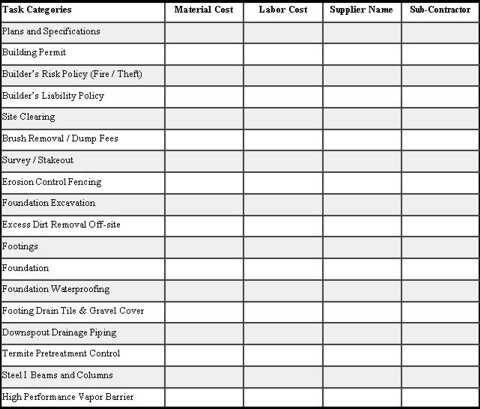Reinforcing Steel
Concrete has very little "tensile" strength. Concrete, which has not been reinforced, will crack when subjected to tension. This can be illustrated quite easily. Pour a piece of concrete 8 feet long, 1 foot wide and 4 inches thick. Let it dry for 28 days. Put two concrete blocks on end and lift the piece of concrete onto the blocks so as to make a table or bridge. Begin to stack concrete blocks in the middle of your "bridge." Before long, the concrete will crack and your bridge will collapse. Watch out for your feet and hands, if you really decide to do this! By adding the concrete blocks to the "bridge," you caused it to bend or 'stretch' in the middle. This is tension.
Concrete reinforcing steel is designed specifically for strengthening concrete. It comes in different diameters. Usually, 1/2" and 5/8" is used in residential construction. The use of this type of steel in your concrete drives, sidewalks, patios, etc. will significantly lengthen the life of your concrete. The steel will minimize cracking. It actually holds the concrete together when you subject it to tension. You subject concrete to tension when you do the following things: drive across it, push against it, subject it to freeze/thaw cycles, concentrate loads on it, etc.
In the event a slab develops a crack, the presence of steel reinforcing rods will keep the concrete from spreading apart or offsetting. Offsetting is where one portion of a slab is higher than the other portion after it cracks. This steel is not very expensive in relation to the cost of having to replace the concrete. A good spacing for these bars is 2 foot on center both directions. While this may seem like an excessive amount, it really will go a long way in strengthening your slabs. Be sure that the steel ends up close to the middle of the concrete slab. The concrete must surround the steel to be effective. If it is too close to the bottom or top of the slab it will be a waste of time and money.
Want perfect concrete work? Find a pro by using my Concrete Work (Sidewalks, Driveways, Patios & Steps) Checklist. I offer a 100% Money Back Guarantee.
Pouring Conditions
Most people think that the best time to pour and finish concrete is on a sunny, breezy, hot day. Wrong! The best results can be achieved if you pour concrete on an overcast, damp day with an air temperature around 55 F. If the temperature were to stay at 55 F for three to four days, it would be ideal. Temperature extremes (hot or cold) are bad for concrete. Windy days can cause too much water to evaporate from the surface too rapidly. Plastic shrinkage cracks will develop. These can severely diminish the quality of the surface of the slab. If you must pour on a hot sunny day, try somehow to erect a temporary tent or screen to keep the sun from beating down on the slab. It does not need the extra heat from the sun!
If you must pour in cold weather, be sure to cover the slab as soon as it is finished with insulating blankets, straw and plastic, or some other insulating material. Keep this cover on for at least 72 hours. As the concrete hardens, a chemical reaction is taking place (exothermic) which actually generates heat. You must store this heat so that the fresh concrete will not freeze.
Curing Compounds
Immediately after you put the final finish on concrete, you should apply a curing compound. This is EXTREMELY important. The water which was added to mix the concrete must not be allowed to evaporate from the slab!
The process of concrete drying is called hydration. This is a two step process. The first step occurs in the first few hours after you mix the concrete. This is why you are able to put a finish on the concrete. Each minute that passes after you add water to the sand, gravel, and cement mixture, calcium carbonate crystals begin to grow. After so many minutes enough crystals have grown to allow the concrete to become "stiff." The crystals MUST have water in order to grow.
These crystals continue to grow for weeks and weeks after you first mixed the concrete. If you allow water to evaporate from the slab, the crystals will stop growing and you will have severely weakened concrete. It's that simple! Only a fool would go to all the trouble and expense of pouring a slab and then not apply curing compound.
If you cannot afford curing compound you have several other alternatives. You can cover the slab completely with plastic. You must seal the edges with dirt so that air or wind does not get between the plastic and the slab. This could cause water to evaporate. Another method is to keep the slab wet with damp burlap or other rags. This is very labor intensive and a great waste of water. You must continually monitor the burlap to be sure that it is constantly wet. You must also figure out a way to keep the burlap from blowing away in windy conditions.
